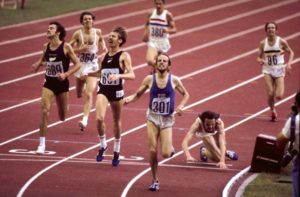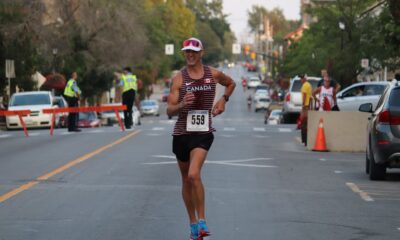Before the world got small with the advent of personal computers in the early 1980’s, knowledge was harder to come by.
Back in 1937 fartlek training, meaning speed play, was developed by Swedish track coach, Gosta Holmer.
The advantages included being highly adaptable, effective for both speed and endurance training improves both fast twitch and slow twitch muscle responses, as well as being suitable for individual or group training.
The great Finnish long-distance runner, Lasse Viren, who won four gold medals at the 1972 and 1976 Olympic Games, would have embraced fartlek training.
These days, it’s known as HIIT (high-intensity interval training) and it’s done by runners at all levels around the world.
Those runners that are trying to lose weight will have greater success doing HIIT workouts than long, steady runs.
Before beginning to incorporate any speed training into your running program, it is important to have a strong base of continuous workouts.
The key is to choose and follow a workout program that suits your fitness level, including wearing proper gear to enhance performance and help prevent injury. 
Running at the same pace won’t improve your speed and your chances of losing weight won’t happen as quickly.
To increase your speed and your heart rate is to include speed into the program. Overall, this will make you a stronger runner.
One book I like to refer to is, The Runner’s World Complete Guide to Running. Page 140 lists five ways to “run It off;” with calorie-burning sessions to help you slim down and speed up.
It says, “Cranking up the intensity is the best way to take your running to the next level. It’s also an effective way to burn extra calories and shed body fat.”
It lists five sessions which include segments of high intensity running for burning calories.
It is suggested to try one or two per week and to also include a five minute warm-up and cool down.
One of the sessions in the Runner’s World book is titled Joe Vigil’s Accelerations, featuring Coach Vigil’s designed session for leg turnover and speed, while it also burns maximum calories in minimum time.
You don’t need a running track for HIIT workouts, though it’s preferable for accuracy of distance covered.
Run 100 meters at roughly one-mile race pace. Recover by walking from the finishing point back to the starting point. Run 110 meters slightly faster, so your 110 meters time is a second more than your 100 meter time. Continue up to 200 meters.
This session is estimated to burn 340 calories.
My personal favourite HIIT workout is known as a ‘ladder.’ It involves running several shorter distances, all at 5 km race pace.
Starting with 800 meters, followed by three-minute slow jog recovery, then 400 meters followed by 60-second jog recovery, then 200 meters followed by 30-second jog rest.
Then do it again in reverse order with the same jog rest periods for each distance.
You can add 600 meters to the ladder workout with 90-second jog rest or 100 meters with 20-second jog rest, if you like.
There are other types of speed workouts you can do that can be done on the road or HIIT workouts in the trails.
As mentioned earlier, HIIT workouts can be done alone, though running these workouts in a group setting can be a lot of fun with a little competition to keep you on your toes.
Adding speed to your workouts will keep you in shape, add variety to your program, and help you to lose excess pounds before you know it.
Thanks to Christine for our weekly features and please follow her on Twitter as well as her YouTube channel.
Stay Safe!!









